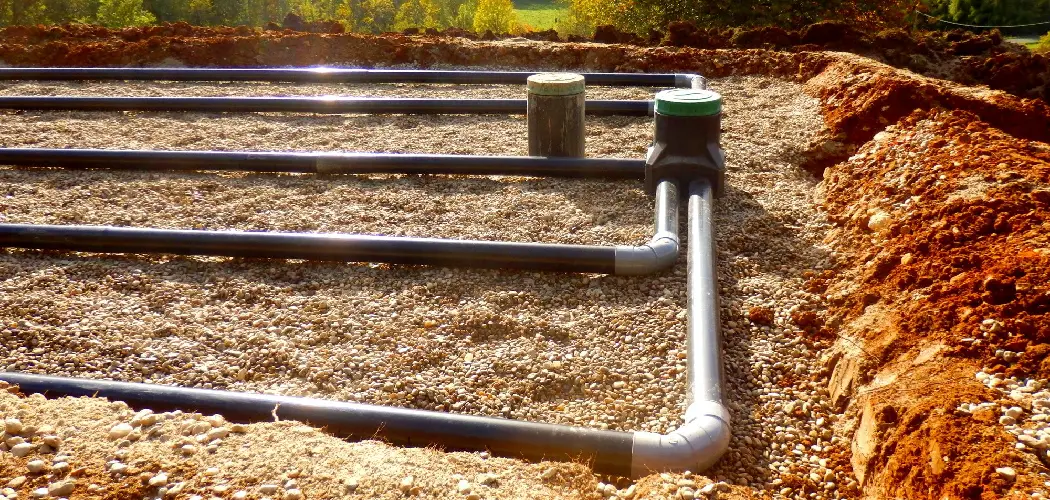Designing a septic system is a crucial process that requires a thorough understanding and careful planning to ensure effective wastewater treatment and environmental safety. This involves selecting the right type of system for the geographical area, understanding local regulations, and taking into consideration the specific needs of the property.
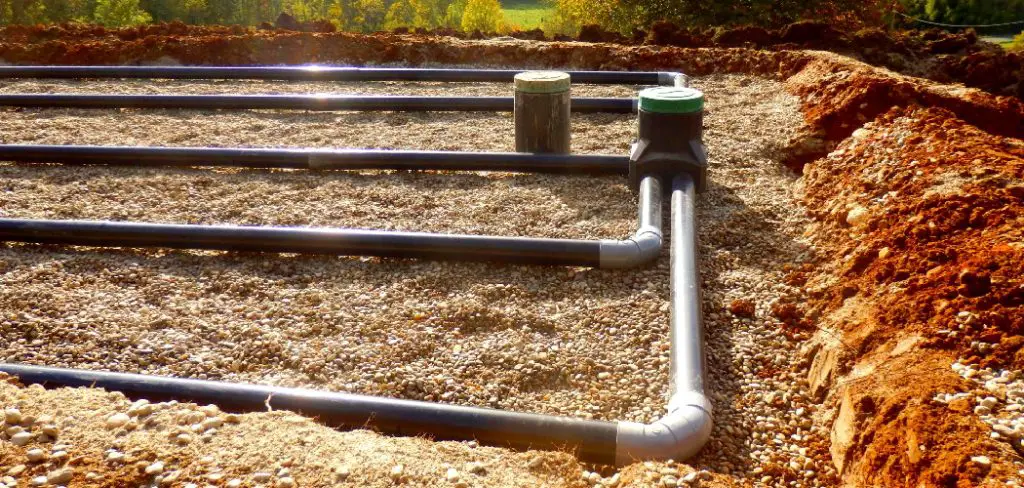
Whether you are a homeowner looking to install a new septic system or a professional in the field, this guide on how to design a septic system aims to provide you with a comprehensive overview of the steps and considerations involved in designing a septic system that is efficient, sustainable, and compliant with all necessary guidelines.
What is a Septic System?
A septic system is an underground wastewater treatment system that is commonly used in areas where there is no access to a centralized sewage system. It typically consists of a septic tank, distribution box, and drain field. The main function of a septic system is to treat and dispose of household wastewater, including sewage, from bathrooms, kitchen sinks, and laundry.
The septic tank acts as a primary treatment unit, separating solids from the wastewater before it is dispersed into the drain field for further treatment and absorption into the soil. The type and size of the septic system required will depend on factors such as household size, soil type, and local regulations.
Things to Consider
Property Size and Soil Type:
The size of the property and the type of soil are important factors in determining the appropriate septic system design. Soil with good drainage is ideal for a septic system as it allows for better absorption and treatment of wastewater.
Household Size and Water Usage:
The number of people living in the household and their water usage habits play a significant role in determining the size and type of septic system needed. A larger household with higher water usage will require a larger septic tank and drain field to accommodate the increased amount of wastewater.
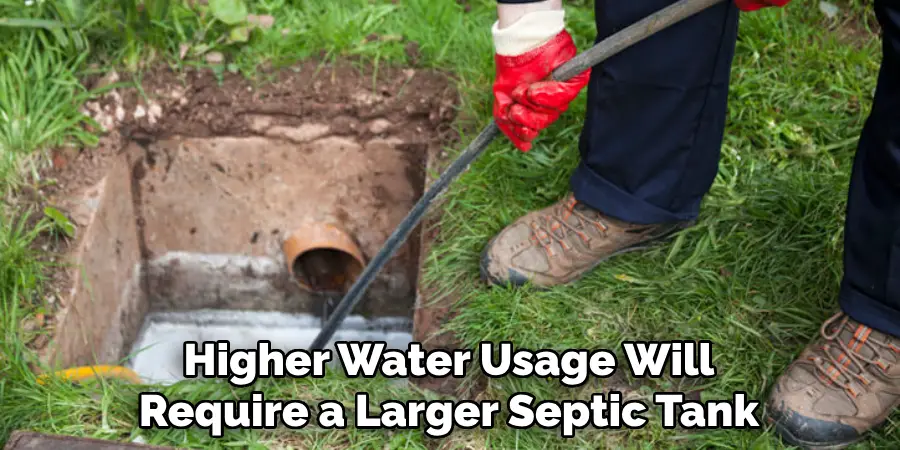
Environmental Factors:
When designing a septic system, it is essential to consider environmental factors such as proximity to bodies of water or wetlands. These areas may have specific regulations that need to be followed, and the system must be designed accordingly to prevent contamination.
Local Regulations:
Each state and municipality has its own regulations governing septic systems. It is crucial to research and understand these regulations before designing a system to ensure compliance and avoid any potential legal issues in the future.
Needed Materials
Designing a septic system will require specific materials based on the type of system chosen and the design layout. Some common materials needed include:
PVC or Polyethylene Pipes for Distribution Lines:
These pipes are used to distribute the treated wastewater from the septic tank into the drain field for further treatment and absorption.
Concrete or Plastic Septic Tanks:
Septic tanks come in various sizes and materials, with concrete and plastic being the most common. They are designed to hold and treat household wastewater before it is discharged into the drain field.
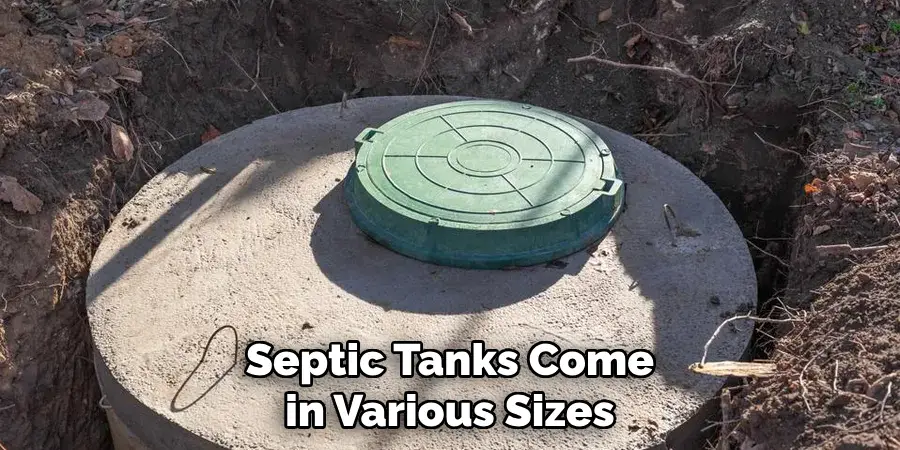
Gravel or Stone for Drain Field:
The drain field serves as the final treatment stage for wastewater before it is absorbed into the soil. Gravel or stone is used to create trenches and provide a porous surface for the treated water to seep through.
10 Step-by-step Guides on How to Design a Septic System
Step 1: Assessing Property and Soil Conditions:
The first step in designing a septic system is to assess the property size and soil conditions. This can be done through a soil test, which will determine the suitability of the site for a septic system. You will also need to consider any environmental factors and local regulations that may affect the design.
It is essential to consult with a professional at this stage to ensure accurate and thorough assessments. The results of the assessment will inform decisions on the type and size of septic system needed. It is also important to consider any future expansion plans for the property.
Step 2: Determine Household Size and Water Usage:
As mentioned earlier, household size and water usage play a vital role in determining the appropriate septic system design. It is important to consider factors such as the number of bedrooms, bathrooms, and laundry facilities in the property to accurately estimate the amount of wastewater that will need to be treated.
It is recommended to overestimate rather than underestimate future growth and water usage changes. You will also need to determine the daily wastewater flow rate to help choose the appropriate size for the septic tank.
Step 3: Choosing the Right Type of Septic System:
There are several types of septic systems available, each with its own advantages and limitations. Some common types include conventional gravity systems, pressure distribution systems, and mound systems. The type of system chosen will depend on factors such as soil conditions, property size, and slope of the land.
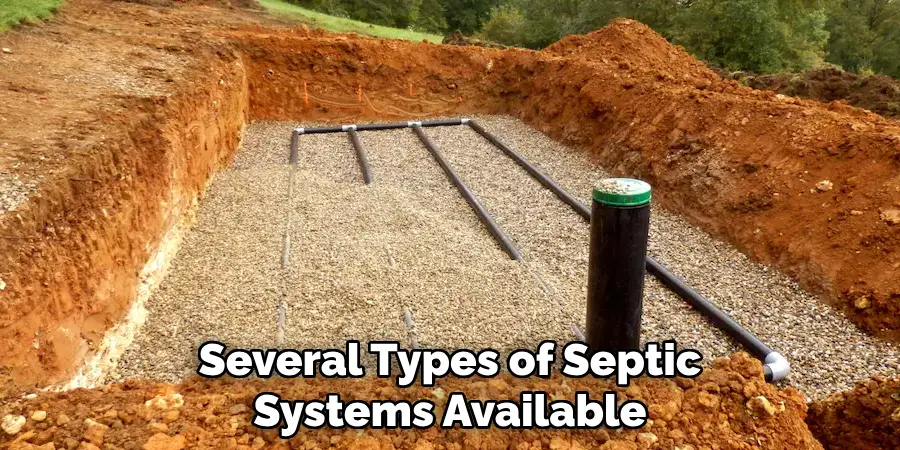
It is best to consult with a professional to determine the most suitable system for your specific needs. The chosen system must also comply with local regulations. You may also need to obtain a permit from the local health department for installation. It is essential to research and understand all regulations and requirements before proceeding with the design.
Step 4: Designing the Septic Tank:
The septic tank is the primary treatment unit for wastewater in a septic system. It is essential to properly design and size the tank based on the household size and water usage, as well as any future expansion plans. The tank should be large enough to allow for proper settling of solids and retention time for effective treatment.
A professional can assist with calculating the necessary dimensions for the tank. If needed, additional components such as effluent filters and baffles can be incorporated into the design for improved performance. You will also need to determine the location of the tank on the property.
Step 5: Designing Distribution Lines:
Distribution lines, also known as drain lines or leach fields, are used to distribute treated wastewater from the septic tank into the soil for further treatment and absorption. The length and layout of these lines will depend on factors such as soil type, slope of the land, and daily wastewater flow rate.
It is important to design these lines in a way that allows for equal distribution of effluent throughout the drain field. A professional can assist with choosing the appropriate size and layout for the distribution lines. You will also need to determine the location of these lines on the property.
Step 6: Determining Drain Field Size:
The size of the drain field will depend on factors such as soil type, slope, and daily wastewater flow rate. The goal is to have enough surface area for proper absorption and treatment of wastewater before it reaches groundwater sources.
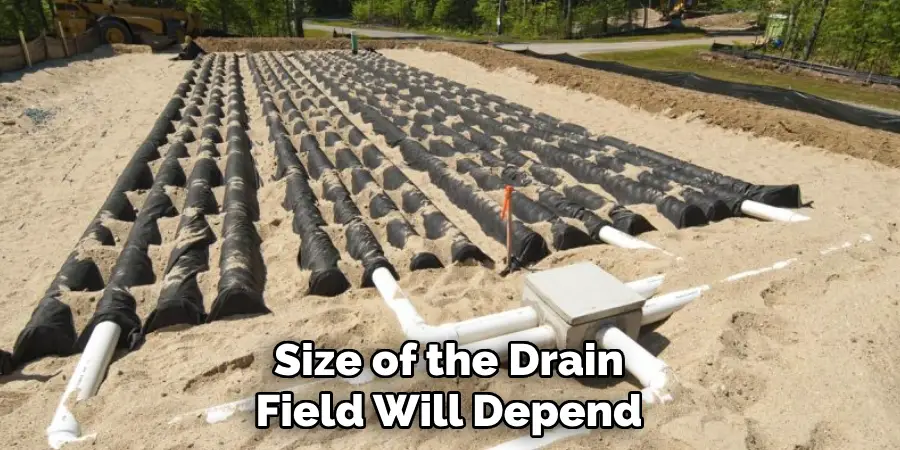
A professional can assist with calculating the necessary dimensions for the drain field based on the chosen septic system type and design. If needed, additional components such as aerobic treatment units, can be incorporated into the design for improved performance.
You will also need to determine the location of the drain field on the property. It is important to ensure the drain field is placed far enough from any bodies of water or wetlands to prevent contamination.
Step 7: Considering Backup Options:
It is essential to have backup options in case of system failure or emergencies. This can include alternative drain field locations, secondary treatment units, or even a backup generator for power outages.
It is recommended to discuss these options with a professional during the design process to ensure proper planning and preparedness. It is also important to regularly maintain and inspect the septic system to prevent potential issues and identify any necessary repairs or upgrades.
You should also have a plan in place for regular pumping of the septic tank. It is recommended to pump the tank every 3-5 years, depending on household size and water usage.
Step 8: Ensuring Proper Permits and Approvals:
Before beginning construction on a septic system, it is crucial to obtain all necessary permits and approvals from local authorities. This may include obtaining a permit for soil testing, design approval from the local health department, and a building permit.
It is essential to follow all regulations and guidelines to ensure the system is built properly and safely. The design plans may also need to be reviewed and approved by a professional engineer or designer. The process for obtaining permits and approvals may vary depending on the location, so it is best to consult with local authorities and professionals.
However, with proper planning and design, a septic system can effectively treat and dispose of household wastewater while maintaining the health and safety of the community and environment.
Step 9: Construction and Installation:
Once all necessary approvals have been obtained, construction can begin on the septic system. It is recommended to hire a professional contractor with experience in septic system installation for this step.
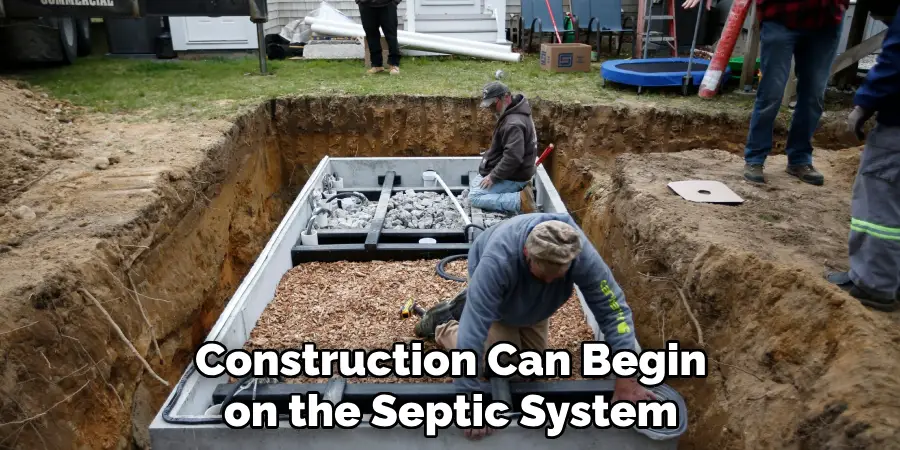
They will follow the design plans and ensure proper installation of all components of the system. It is important to regularly monitor the progress of construction and address any issues that may arise. Once the system is fully installed, it will need to be inspected and approved by local authorities before being put into use.
Step 10: Maintenance and Care:
Proper maintenance and care are essential for the longevity and effectiveness of a septic system. This includes regular pumping of the septic tank, monitoring water usage and avoiding excessive use of water, proper disposal of household waste and chemicals, and preventing damage to system components.
It is also important to regularly inspect the system for any signs of issues or needed repairs. Following these maintenance guidelines will help ensure that your septic system continues to function properly for many years to come.
Following these steps and guidelines on how to design a septic system will help ensure the successful design, installation, and maintenance of a septic system. It is important to work with professionals throughout the process to ensure proper planning and compliance with regulations.
By taking these necessary steps, you can have a functioning septic system that meets your household needs while also protecting the environment. Remember to regularly maintain and care for your septic system to prevent any potential issues and ensure its longevity.
Hiring Professionals for Design Assistance
Designing a septic system can be a complex and technical process, so it is recommended to hire professionals for assistance. A professional engineer or designer can assist with soil testing, determining appropriate tank and drain field sizes, and ensuring compliance with local regulations.
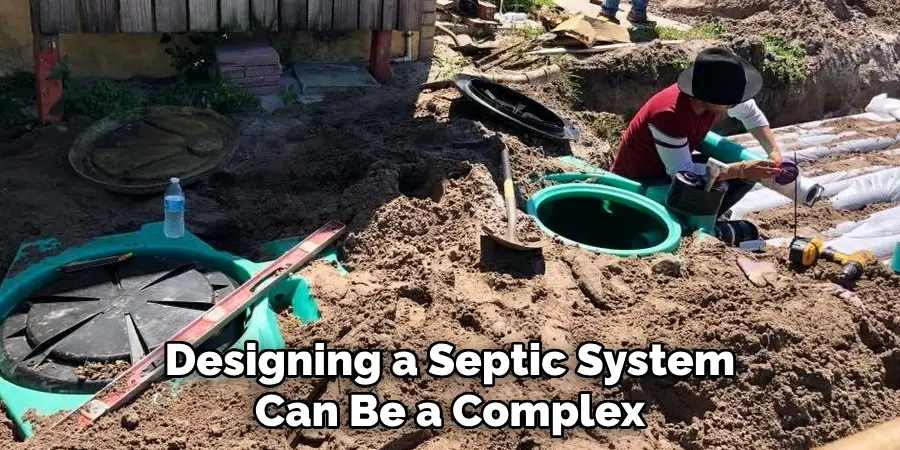
They can also provide guidance on backup options and maintenance plans. Additionally, a professional contractor should be hired for the construction and installation of the system to ensure proper and safe execution. By hiring professionals, you can have peace of mind knowing that your septic system is designed and installed correctly.
Implementing Maintenance and Monitoring Plans
As mentioned, regular maintenance and monitoring are crucial for the proper functioning of a septic system. This includes regularly pumping the septic tank every 3-5 years, depending on household size and water usage.
It is also important to monitor water usage and avoid excessive use, properly dispose of waste and chemicals, and regularly inspect the system for any signs of issues or needed repairs. By following these maintenance and monitoring plans, you can prevent potential issues and ensure the longevity of your septic system. It is also recommended to keep records of all maintenance and inspections for future reference.
Environmental Considerations and Sustainability:
Designing a septic system also involves considering the environmental impact and ensuring sustainability. Properly designed and maintained septic systems can help protect groundwater sources from contamination and reduce pollution in nearby bodies of water.
It is important to use environmentally friendly materials and follow proper disposal methods for waste products to minimize negative impacts on the environment.
Additionally, implementing sustainable practices such as using water-saving fixtures and regular maintenance can also help reduce the environmental impact of a septic system. By being conscious of the environment during the design and maintenance process, you can help ensure a more sustainable future for your community.
How Much Could It Cost?
The cost of designing a septic system can vary depending on factors such as the size and complexity of the system, location, and hiring professionals. On average, it can cost anywhere from $3,000 to $10,000 or more for design and installation. Regular maintenance costs can also add up over time.
However, investing in a well-designed and properly maintained septic system can save money in the long run and provide a reliable wastewater management solution for your household. It is important to consult with professionals and obtain quotes before making any decisions.
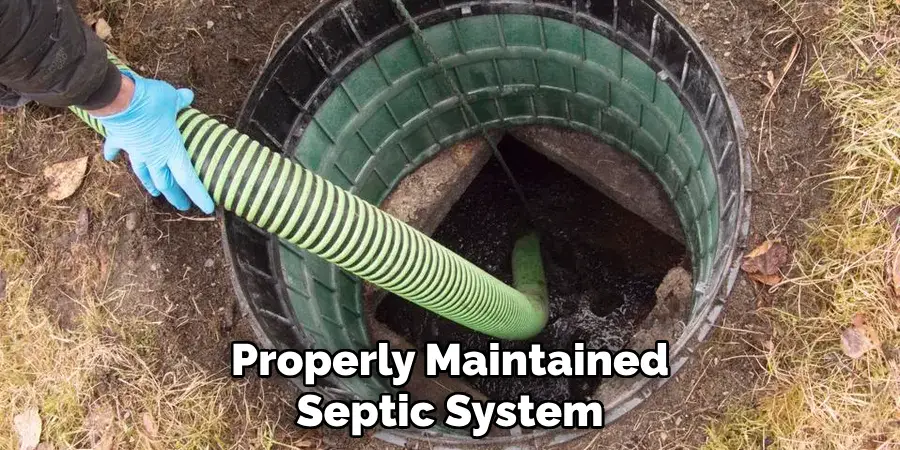
In the end, proper planning, design, installation, and maintenance of a septic system can lead to a cost-effective and environmentally sustainable solution for managing household wastewater.
Frequently Asked Questions
Q: How Often Should I Pump My Septic Tank?
A: Septic tanks should be pumped every 3-5 years, depending on household size and water usage. It is recommended to consult with a professional for a more accurate schedule.
Q: Can I Use Septic Tank Additives?
A: It is not necessary to use septic tank additives as regular maintenance and proper usage can keep the system functioning properly. In some cases, additives may even harm the system. It is best to consult with a professional before using any additives.
Q: What Happens if My System Fails?
A: If a septic system fails, it can lead to backups, foul odors, and potential health hazards. It is important to address any issues immediately and consult with professionals for repairs or replacements.
Q: Can I Plant Trees or Build Structures over the Drain Field?
A: No, it is not recommended to plant trees or build structures over the drain field as this can damage the system and lead to costly repairs. It is important to keep the area clear and limit heavy traffic over the drain field.
Q: How Can I Tell if My Septic System Is Failing?
A: Some signs of a failing septic system include slow-draining fixtures, foul odors, and standing water in the drain field area. It is important to regularly inspect the system for any signs of issues and address them promptly.
Conclusion
Designing an efficient septic system is imperative for ensuring that wastewater is treated appropriately, thereby protecting the environment and public health. The process involves extensive research, planning, and adherence to local regulations.
By understanding the needs of your property, selecting the appropriate system type, and consulting with professionals when necessary, you can design a septic system that not only meets regulatory requirements but also contributes to sustainable environmental practices.
Remember, a well-designed septic system is an investment that can save you time, money, and potential headaches in the long run. So, take your time, do your research, and make informed decisions to design a septic system that meets your needs and promotes a healthier environment. Thanks for reading this article on how to design a septic system.

